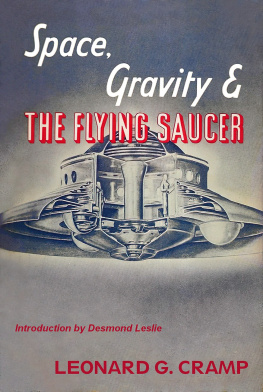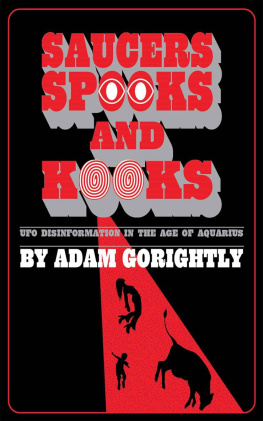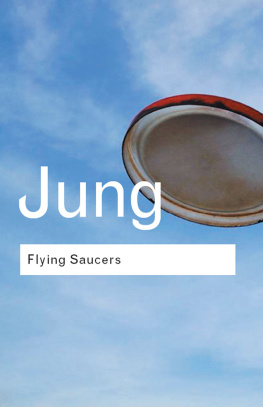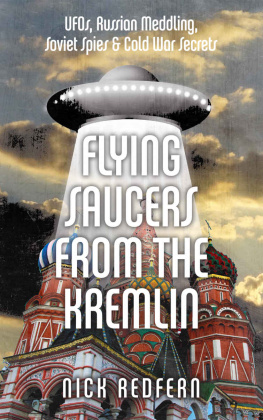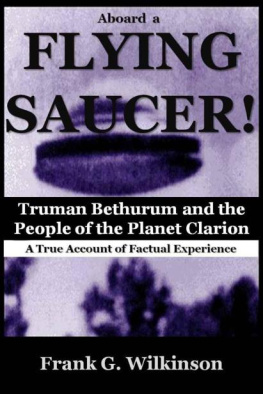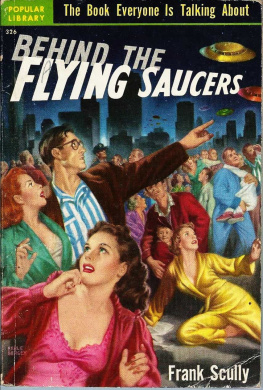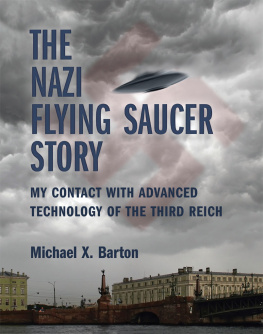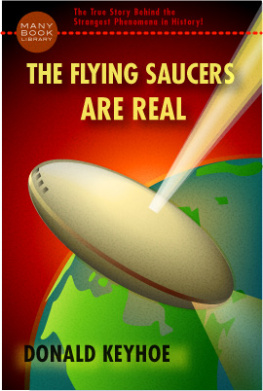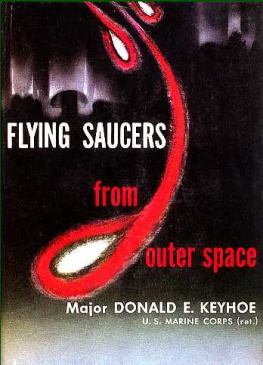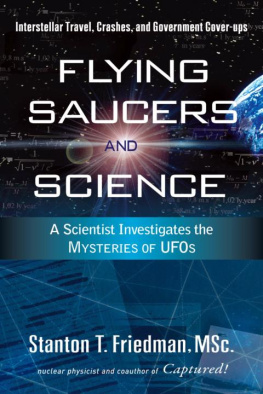Perditus Liber Presents
the
OCLC: 4591144
book
Space, Gravity and
the Flying Saucer
By
Leonard G. Cramp
Published 1955

Author's impression of a sectional view of a scout ship
First Published February 1955
Copyrighted 1955 by
British Book Centre, Inc.
122 East 55 Street, N.Y., N.Y.
Printed in U.S.A.
Dedication
I dedicate this book to my wife Irene who shared the work throughout, and had to decipher my writing, and to Gary and David, that they will seek truth, as I have tried
Acknowledgements
It is with grateful thanks that I wish to acknowledge all those whose encouragement has helped make this book possible; to Edward Rose, whose untiring cooperation and suggestions have helped me immeasurably; to all the members of the little band who have so willingly assisted me; and John Campbell for his endless patience through years of research towards a common goal.
I wish to thank Antony Avenel, who like the true philosopher-scientist he is, complied unhesitatingly when I asked for his co-operation. His continual offers of further assistance has been an inspiration to me.
I should also like to extend my grateful thanks to Messrs T. Werner Laurie Ltd, for their assistance in procuring information and photographs, not least the copyright of the Coniston photograph reproduced as an analysis drawing in this book.
Finally, to Desmond Leslie for his introduction to the book and his kind co-operation.
L EONARD G. C RAMP
Contents
Illustrations
Plates 2-5 appear as an insert between pages and
Introduction
ON the morning of 15th February 1954, a thirteen-year-old boy, Stephen Darbishire, began to feel uncomfortable. A nagging persistent restlessness told him he must go up the hill behind his home at Coniston, Lancashire. He could not tell why; he merely knew he had to. And so with his eight-year-old cousin, Adrian Myer, he climbed the small steep hill, taking with him his little Kodak camera in the hope of getting a few good bird pictures, for bird watching is one of his favourite pastimes.
Soon the boys had reached the summit and Stephen set his camera (or thought he had done so) on Infinity and pointed it towards the long gleaming strip of Lake Coniston, about two miles away on the floor of the valley, the lake on which the famous Bluebird Speedboats set up world records. It was a cold February day, half sunny, half cloudy. The summit of Coniston Old Man (2,575 feet) which rose beyond the hill, was lost in cloud.
At eleven a.m. Adrian was looking towards the mountain; Stephen was looking away in the opposite direction. Suddenly, Adrian thumped him on the back and shouted: Look at that thing!
Down from the direction of the sun a strange silvery round object was descending. It came to earth about a hundred yards away and disappeared behind a bit of rising ground. A few seconds later it came into view again. Suddenly, it tipped up on its side and shot up into the sky with a deep swishing sound but until then it had been completely silent. In a few seconds it had disappeared in the clouds.
Just before it went down behind the rise, Stephen succeeded in obtaining a photo. As the object came into view again he took another. Unfortunately, he had not set his camera
properly so the picture was blurred, but enough appeared on the plate for us to make several very important observations which will be discussed later.
According to Stephen, the object had a silvery glassy appearance, Like metal or plastic which light goes through but which you cant see through. (The word he was searching for was translucent). At first it was directly in the suns rays and very bright. But as it began to rise, clouds cut off the direct sunlight so the boys were able to see it more distinctly. It was a solid metal-like thing, with a dome, portholes, and three bumps or landing domes underneath. In the centre the underneath was darker and pointed like a cone. At first three portholes were visible but then it turned slightly and we saw four. There was what looked like a hatch on top of the cabin dome.
Very excited, the boys ran down the hill to Stephens home, Little Arrow Farm, where the tale was breathlessly relayed to Doctor S. Darbishire, Stephens father, who at first frankly did not believe it. However, being an intelligent and open-minded Doctor, he made his son sit down, write a statement, and draw what he had seen from memory.
It was then decided to take the film to Mr Pattison who has a photographic studio in Coniston village (about one-and-a-half miles away) to be developed, although at the time no one thought it very likely there would be anything on it. However, some time later, Mr Pattison rang up very excited with the news Theres something on it and it looks like a flying saucer.
Sure enough there is a definite saucer-shaped object on the negative which, although a bit blurred, is clear enough for the three balls orlanding domes to be distinguished, also a suggestion of dark portholes, while the dark cone beneath is clearly visible.
Before announcing this, Doctor Darbishire cross-examined Stephen very thoroughly, also Adrian, as he was well aware
what trouble a hoax could lead to both for himself and his entire family. However, both boys stuck to their story and the Doctor said later: I know Stephen pretty well and I realised he was not lying. Nor do I believe two boys of that age could possibly have faked such a negative. After a family council it was decided that, come what may, this event was too important to be suppressed, so Doctor Darbishire picked up the phone.
The first press reaction was from the Daily Mail who sent up an investigator. This investigator was perfectly satisfied, as have been all investigators, that the picture was genuine. The best the Mail could do to discredit it was a comment by their scientific correspondent J. Stubbs Walker (who did not personally go to Coniston to investigate), that under certain conditions ice crystals might produce the appearance of a solid image. It was not, however, explained how an ice-cloud could produce the exact image of a flying saucer complete with dome, portholes, and three-ball undercarriage and a loud swish. A little later Al Griffin of the Lancashire Evening Post devoted a whole page to a well-written and intelligent exposition of the occurrence, reproducing both Stephens and Adamskis photographs for comparison.
I travelled up to Coniston on 23rd February and was the guest of the Darbishires for two and a half days. During that time I was able to assess them pretty thoroughly as an intelligent and responsible family who had long ago passed the stage of spiritual adolescence. I was taken up the mountain by Stephen and the whole drama was re-enacted, the exact positions established, and the camera closely examined. It soon became apparent that the saucer could not have been more than a hundred yards away because immediately beyond the hillock the ground dips slightly and then rises almost in a steady ascent to the summit of the Old Man. It was into this dip that the saucer briefly descended.

